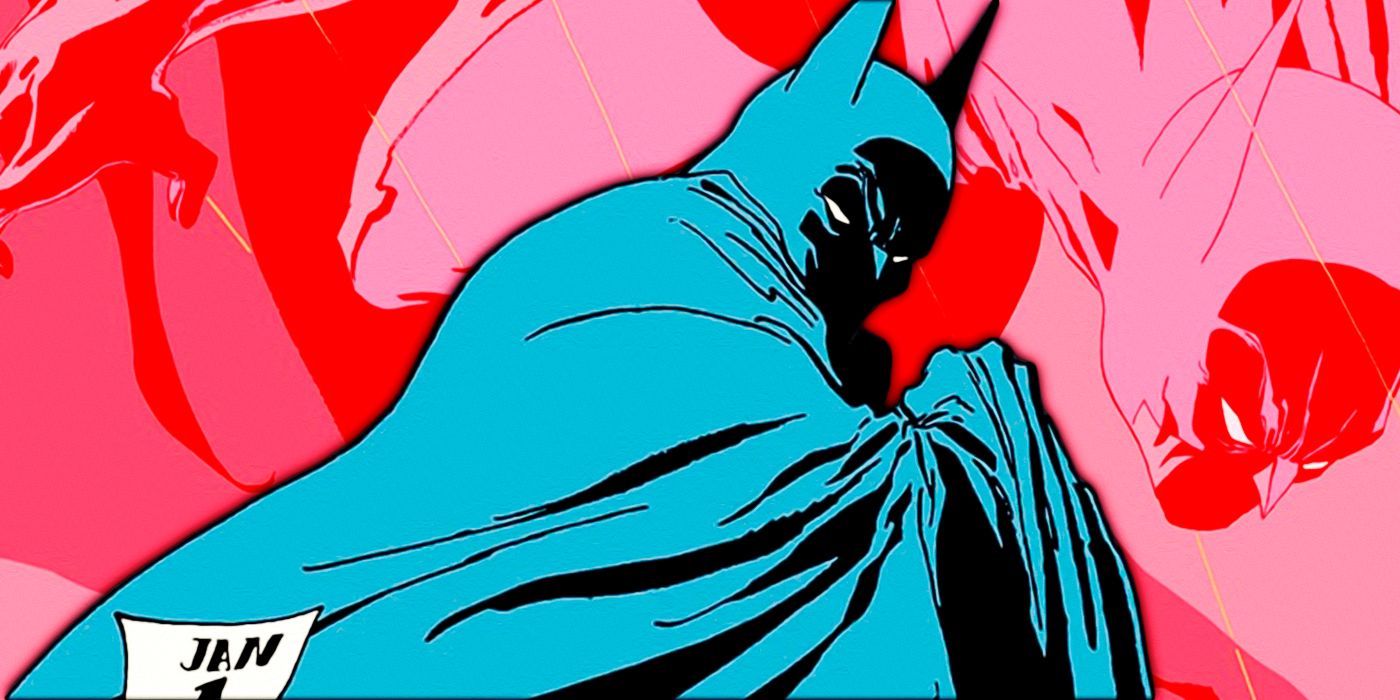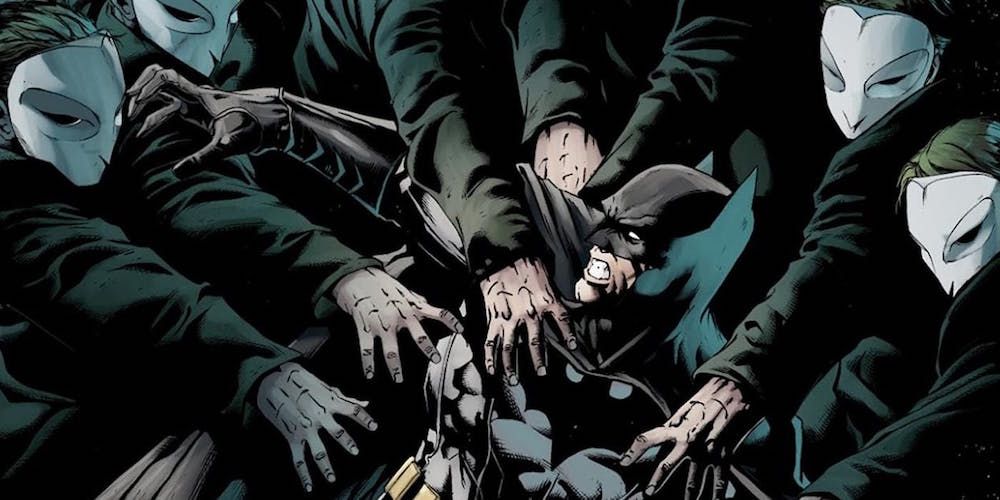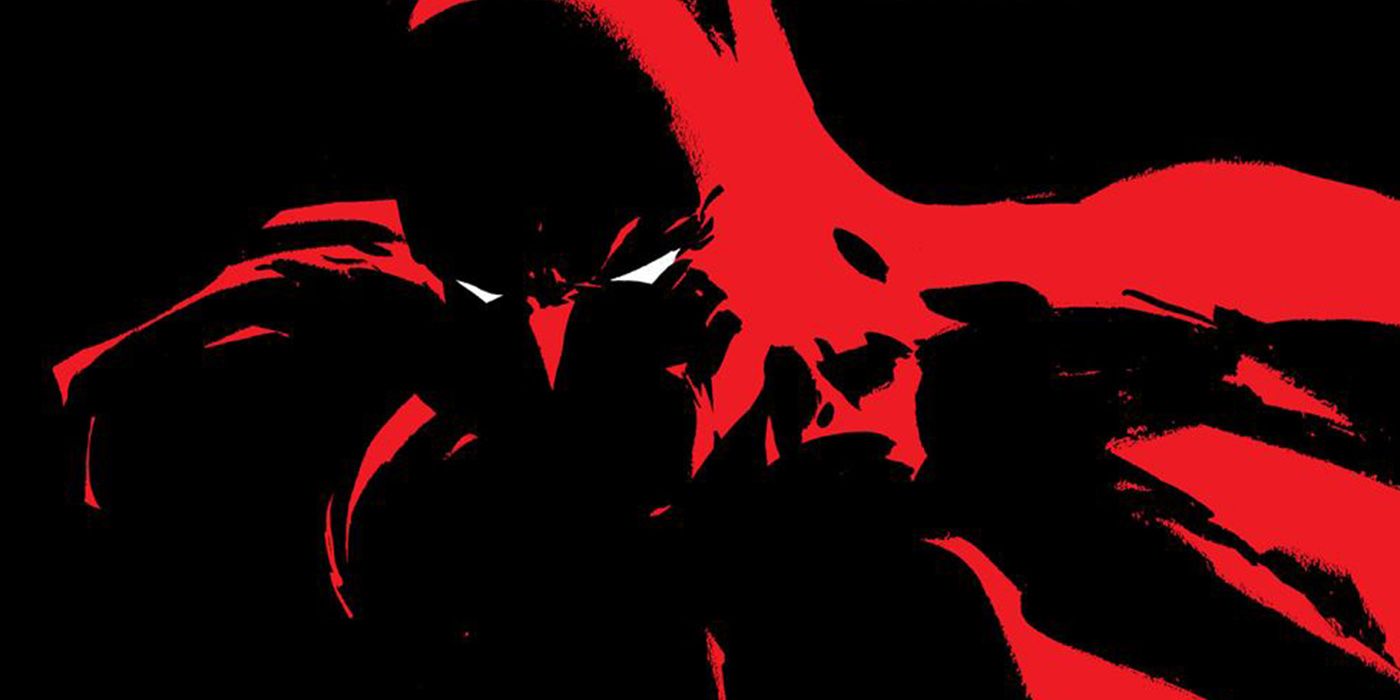Three years -- that's all it took for Jeph Loeb and Tim Sale to craft some of the most influential Batman comics ever. Published in 1996, their first Dark Knight tale, Batman: Haunted Knight, introduced readers to an introspective Bruce Wayne swarmed by external demons and internal doubts. Their next comic, The Long Halloween, is hailed as one of the best Batman stories of all time. This 13-issue series cemented the tone and tenor of Batman comics by weaving elements of film noir into a sprawling murder mystery. Loeb and Sale's final collaboration, Dark Victory, amplified The Long Halloween's tone to perfection while showcasing Gotham's endless reservoir of baddies. Although they only released three Batman comics together, Jeph Loeb and Tim Sale's stories still influence filmmakers and comic creators today.
Christopher Nolan's Dark Knight Trilogy owes much of its success to the duo. In particular, Nolan's The Dark Knight draws heavily from The Long Halloween's grounded portrayal of realistic villains like Two-Face and Salvatore Maroni. Character-wise, Aaron Eckhart's performance as Harvey Dent is a near replica of Loeb and Sale's heroic yet unhinged depiction of the character. Nolan even lifts "I believe in Harvey Dent" from the comic, as well. After Dent transforms into the monstrous Two-Face, Loeb and Sale continue to humanize the villain through his relationship with his wife. Much like Dent's relationship with Rachel in The Dark Knight, the comic spotlights Dent's struggle to love his wife as a newly disfigured man. Even though he still succumbs to fits of violent rage, Loeb and Sale's Two-Face retains his humanity by trying to save his failing marriage. Through its realistic portrayal of Two-Face, The Long Halloween shaped Nolan's more grounded approach to the villains in The Dark Knight Trilogy.
Interestingly enough, Scott Snyder and Greg Capullo's Batman: The Court of Owls reflected Christopher Nolan's take on Batman's role in Gotham City. The irony, however, is that Nolan's understanding of Batman and Gotham once again stems from The Long Halloween. The common thread between all these stories is that Batman cannot defend Gotham on his own. In Loeb and Sale's tale, Gotham City chews up and spits out Bruce Wayne every night. Ultimately, there are just too many villains to stop, too much corruption to end and too little time to find "The Holiday Killer". Gotham's corruption runs deep, and Bruce can't uproot the city's evil on his own.
Like The Long Halloween, Snyder and Capullo's comic flings Batman into Gotham's shadowy guts and forces him to claw his way out. Throughout its seven issues, the Court of Owls, the antagonist of this tale, reminds Bruce that Gotham City is never really in his control. The Court of Owls is a secret society of wealthy and powerful Gothamites committed to shaping Gotham as they see fit. Even worse, they have an endless supply of chemically-engineered assassins, Talons, to bring their vision to life. Batman cannot defeat them and must accept that he cannot save Gotham alone.
Like the aforementioned works, Matt Reeves' The Batman reflects Jeph Loeb and Tim Sale's narrative and stylistic approach to the Caped Crusader. From a narrative standpoint, Reeves' film mirrors Loeb and Sale's Haunted Knight in its portrayal of Bruce Wayne as a scarred loner, content to isolate himself from others. In the comic, Batman succumbs to the Scarecrow's fear gas and must face his biggest fear -- being alone. Additionally, Bruce develops a love interest, but because of his inability to be vulnerable, the relationship fizzles out. Reeves' movie amplifies these emotions well by depicting Bruce as a scared orphan, unwilling and unable to form close bonds with others. Both Haunted Knight and The Batman present a more vulnerable Bruce Wayne. He is introspective, insecure and guarded, making him all the more relatable -- no matter how sad he may be.
Undoubtedly, Tim Sale is a once-in-a-generation artist. When readers pick up The Long Halloween, they don't just read it, they experience it. Tim's art makes readers feel like they're living in another time through its use of exaggerated character features, muted color tones and expansive shadows. Sale's style draws heavily from film noir and Reeves integrates Sale's vision into every frame. The Batman immerses audiences with its cinematography, showcasing distinct visual tones for all of Gotham City. Light and shadows help the viewer understand and feel each scene. Every artistic choice is intentional; nothing is the result of chance.
Batman fans love to bicker and debate about which Batman story is the best of all time. Some fans say it's The Dark Knight Returns, while others shout it's Batman: Year One. However, after 25 years, Jeph Loeb and Tim Sale's iconic take on Batman still influences comic creators and filmmakers to this very day. If imitation is the sincerest form of flattery, then it's clear that Haunted Knight, The Long Halloween and Dark Victory are the most influential Batman comics of all time.



